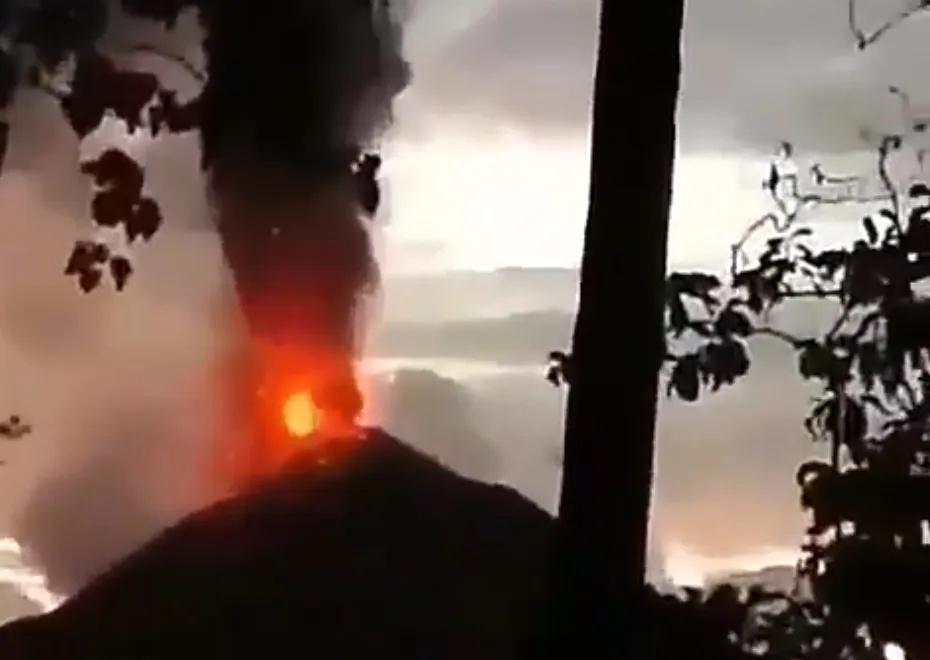
Eruption fears move Indonesian volcano aviation alert to red
Dec 27, 2018

Authorities in Indonesia have raised the aviation alert level to red due to increasing fears of an imminent eruption from a prominent volcano. This decision follows heightened seismic activity and visible signs of unrest in the volcano, prompting concerns for air travel safety in the region. The red alert indicates a significant risk, urging airlines to reroute flights and implement safety measures to protect passengers. Local communities are also being advised to prepare for potential evacuation as the situation develops. The Indonesian government is closely monitoring the volcano and coordinating responses to ensure public safety amid these unsettling developments.
The recent increase in seismic activity at Indonesia's most active volcano has raised significant concerns among aviation authorities, prompting an upgrade of the aviation alert level to red. This is a critical development for both local and international air travel, as red indicates a high likelihood of an imminent eruption that could pose serious risks to aircraft. Understanding the implications of this alert and the potential impact on air travel is essential for passengers, airlines, and aviation professionals alike.
Understanding the Aviation Alert Levels
The aviation alert system is categorized into several levels, each indicating the severity of volcanic activity and its potential impact on air traffic. The levels are as follows:
| Aviation Alert Level | Description |
|---|---|
| Green | No eruption expected; normal conditions. |
| Yellow | Volcanic activity is increasing; potential for eruption. |
| Orange | Significant volcanic activity; eruption possible within days. |
| Red | Imminent eruption; significant ash clouds expected. |
With the current level set to red, airlines operating in and out of Indonesia must prepare for potential disruptions in flight schedules and routes. The red alert not only signifies the increased likelihood of an eruption but also warns of ash clouds that can severely hinder visibility and affect engine performance in aircraft.
Impact on Aviation
When a volcano in Indonesia is placed on red alert, several immediate effects can be felt in the aviation sector. These include:
- Flight cancellations: Airlines may decide to cancel flights to ensure passenger safety, particularly on routes that pass near the volcano.
- Flight diversions: Aircraft may be rerouted to avoid ash clouds, which can extend travel time and increase operational costs.
- Increased monitoring: Airlines and air traffic control will enhance monitoring of volcanic activity, working closely with geological agencies to get timely updates.
The potential dangers of volcanic ash include engine failure and reduced visibility, making it paramount for airlines to adhere to safety protocols. Historical data shows that volcanic eruptions can lead to significant disruptions in air travel, as seen with the 2010 Eyjafjallajökull eruption in Iceland, which halted flights across Europe for several days.
Safety Precautions for Passengers
For travelers planning to fly in the region, it is advisable to stay informed about the ongoing situation. Here are some safety tips:
- Regular Updates: Check flight status regularly through airline websites or mobile apps.
- Travel Insurance: Consider purchasing travel insurance that covers cancellations due to natural disasters.
- Flexible Itineraries: If possible, maintain flexibility in travel plans to accommodate any unexpected changes.
Passengers should also be aware that volcanic activity can sometimes lead to unexpected travel delays or cancellations, and being prepared can help alleviate stress during such situations.
Role of Technology in Monitoring Volcanic Activity
Advancements in technology have significantly improved the ability to monitor volcanic activity. Instruments such as seismographs, satellite imagery, and gas emission sensors are crucial in predicting eruptions and assessing risks. These tools allow experts to:
- Analyze seismic data: Identifying patterns that may indicate an impending eruption.
- Track ash dispersion: Utilizing satellite data to predict the movement of ash clouds and their potential impact on air traffic.
- Communicate effectively: Keeping airlines and the public informed through real-time updates.
Such technological advancements play a vital role in ensuring the safety of air travel during volcanic activity, allowing for timely decisions that protect passengers and crew members.
Conclusion
The elevation of Indonesia's volcanic aviation alert to red underscores the seriousness of the situation and the potential implications for air travel. Airlines, passengers, and aviation authorities must work together to navigate the challenges posed by volcanic eruptions. Staying informed, prepared, and utilizing the latest technology will be essential for ensuring safety in the skies amidst these natural phenomena. As developments unfold, it is crucial to remain vigilant and responsive to changes in volcanic activity that could impact air travel.
In summary, the volcanic activity in Indonesia serves as a reminder of the dynamic nature of our planet and the importance of preparedness in aviation. With a thorough understanding of aviation alert levels and proactive measures in place, the aviation community can continue to ensure passenger safety, even in the face of potential eruptions.
Related Articles

Explore Thailand: The Best Islands to Visit for Paradise, Adventure, and Relaxation

The Ultimate Guide to the Best Islands in Thailand for Your Next Getaway

Do babies need passports? How to get a passport for a newborn

How to get a U.S. passport fast: here’s how to expedite the process

What is Mobile Passport Control: 5 reasons why you should use it

SENTRI vs. Global Entry: A detailed guide

Do you need a passport to go to the Bahamas? Let’s find out

Do you need a passport to go to Mexico? A detailed guide

Do you need a passport to go to Canada? We got the answer

Do You Need a Passport for a Cruise: An Essential Travel Guide

Booster Seat Requirements: All the Rules to Follow in Your Rental Car

What Are the World’s Most Powerful Passports, and How Does Yours Rank?

How to Take a Passport Photo at Home: A Helpful Guide

You've got to have heart! Southwest's new livery

Your opinion: Should water be free on low cost carriers?

Young women bolder than guys as solo travellers
